In this tutorial, an existing finite element model of a plastic coffee pot lid demonstrates how to apply constraints and perform an OptiStruct finite element analysis. HyperView post-processing tools are used to determine deformation and stress characteristics of the lid.
The following exercises are included:
| • | Retrieve the HyperMesh database file |
| • | Set up the problem in HyperMesh |
| • | Apply loads and boundary conditions to the model |
| • | View the results in HyperView |
Retrieve the HyperMesh Database File
Step 1: Launch HyperMesh and set the OptiStruct User Profile
| 1. | Launch HyperMesh. The User Profiles dialog appears. |
| 2. | Select OptiStruct and click OK. This loads the user profile. These profiles include the appropriate template, macro menu, and import reader, paring down the functionality of HyperMesh to what is relevant for generating models for OptiStruct. |
The User Profiles dialog can also be accessed from the Preferences menu on the toolbar.
Step 2: Open the File coffee_lid.hm
| 1. | Click File > Open. An Open Model browser window opens. |
| Note: | If HyperMesh Desktop was launched, use: File > Open > Model. |
|
| 2. | Select the coffee_lid.hm file you saved to your working directory from the optistruct.zip file. Refer to Accessing the Model Files. |
The coffee_lid.hm database is loaded into the current HyperMesh session, replacing any existing data. The database only contains geometric data.
Set up the Problem in HyperMesh
When building models, it is encouraged to create the material and property collectors before creating the component collectors. This is the most efficient way of setting up the file since components need to reference properties and materials.
Step 3: Create the material
The imported model has two component collectors with no materials. A material collector needs to be created and assigned to the component collectors.
| 2. | Within the Model browser, right-click and select Create > Material. A default MAT1 material template displays in the Entity Editor below the Model browser. |
| 3. | For Name, enter plastic. |
| 4. | Similarly, input the material values next to the corresponding fields as shown in Figure 1. Click ENTER after inputting the values. A new material, plastic, has been created. |
If a material property does not display a value next to it, it is turned off. To edit these material properties, click on the blank Value fields next to them and enter the required values.
The material uses OptiStruct linear isotropic material model, MAT1. For E (Young's Modulus), enter 1137; for NU, (Poisson's Ratio), enter 0.26; and for A (coefficient of linear thermal expansion), enter 81x10-6. It is not necessary to define a density value since only a static analysis is performed. Density values may be required, however, for other solution sequences.
At any time, the card image for this collector can be modified by clicking on plastic in the Model browser or by using the Card Editor  .
.
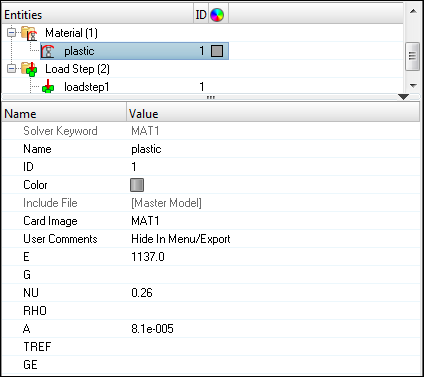
Figure 1: Material property values for “plastic”
Step 4: Edit the properties and update the component collector
| 1. | Expand the Property folder in the Model browser and click on PSHELL. The PSHELL property entry is displayed in the Entity Editor. |
| 2. | Verify that the thickness value, T, is set to 2.5. |
| 3. | Notice that the Value field next to Material is set to <Unspecified>. This indicates that no material properties are being referenced by this property. |
| 4. | For Material, click Unspecified > Material. |
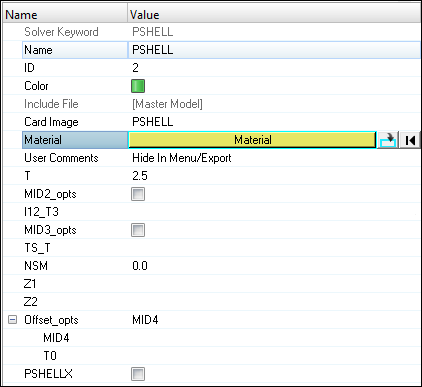
Figure 2: Selecting the Material plastic for the property PSHELL
| 5. | In the Select Material dialog, select plastic and click OK. The material, plastic is now assigned to the property PSHELL. |
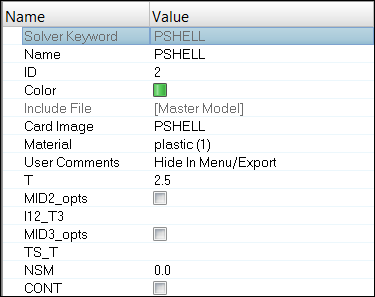
Figure 3: The PSHELL property entry fields in the Entity Editor
| 6. | Repeat steps 4.1 to 4.5 to update the property PSHELL1 and assign the material plastic to it. |
The property collectors and component collectors, PSHELL and PSHELL1, now reference the material plastic. The component collectors that reference the corresponding properties are automatically updated with the specified material. If you access the Entity Editor and edit either of these property or component collectors, notice that the Material fields are now all set to plastic(1).
Apply Loads and Boundary Conditions to the Model
Thermal loading has already been applied to the model. In the following steps, constraints will be applied to the model.
Step 5: Create a load collector
| 1. | In the Model browser, right-click and select Create > Load Collector. A default load collector template displays in the Entity Editor. |
| 2. | For Name, enter constraints. |
| 3. | Click on the default Color and select a color from the color palette. A new load collector, constraints is created. |
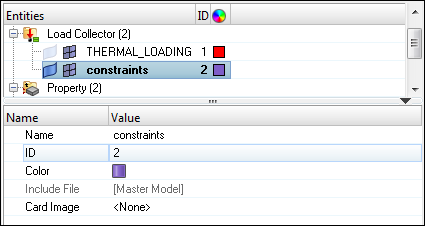
Figure 4: Creating the constraints Load Collector
Step 6: Create constraints at the corners of the spout cut-out
| 1. | Click BCs > Create > Constraints to open the Constraints panel. |
| 2. | Click the entity selection switch and select nodes from the menu. |
| 3. | Select the two nodes, shown in the following figure, at the corners of the spout cut-out, by clicking on them in the graphics area. |
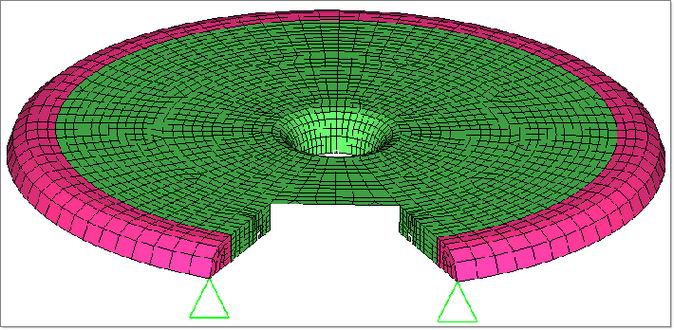
Figure 5: Selecting nodes for constraints at corners of spout cut-out
| • | DOFs with a check will be constrained while dofs without a check will be free. |
| • | DOFs 1, 2, and 3 are x, y, and z translation degrees of freedom. |
| • | DOFs 4, 5, and 6 are x, y, and z rotational degrees of freedom. |
| 5. | Select create. Two constraints are created. Constraint symbols (triangles) appear in the graphics area at the selected nodes. The number 3 is written beside the constraint symbol, indicating the dof constrained. |
| 6. | In the size field, enter 1.0. Note how the size of the constraint symbols in the graphics area changes. |
| 7. | Click return to go to the main menu. |
Step 7: Create constraints opposite the spout cut-out to simulate two hinges
| 1. | Click Geometry > Create > Nodes > XYZ to open the Nodes: XYZ panel. |
| 2. | For x =, enter the value 0.0. |
| 3. | For y =, enter the value -10.0. |
| 4. | For z =, enter the value 0.0. |
| 5. | Click create. A node is created with the coordinates (0, -10, 0). This indicates the centerline of the coffee lid. |
| 6. | Click return to go to the main menu. |
| 7. | Click BCs > Create > Constraints to open the Constraints panel. |
| 8. | Select the nodes in the following figure, by clicking on them in the graphics area. |
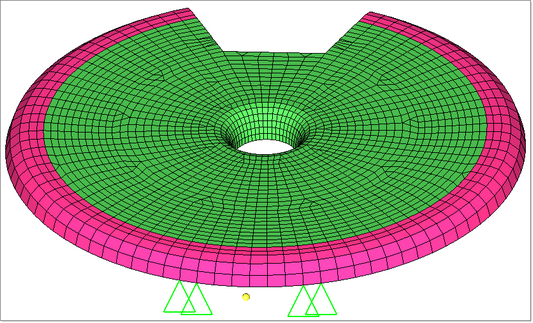
Figure 6: Creating constraints opposite the spout cut-out to model hinges.
| 9. | Constrain only dof1, dof2, and dof3. |
| 10. | Click create. This creates four more constraints. Again, this is verified by the appearance of constraint symbols in the graphics area. |
| 11. | Click return to go to the main menu. |
| 12. | From the Geom page, select the temp nodes panel. |
| 13. | Click clear all. This removes the temporary node that was created at (0, -10, 0). |
Step 8: Create an OptiStruct subcase (also referred to as a loadstep)
| 1. | In the Model browser, right-click and select Create > Load Step. A default load step template is now displayed in the Entity Editor. |
| 2. | For Name, enter brew cycle. |
| 3. | Expand Analysis type and select Linear Static. |
| 4. | For SPC, click Unspecified > Loadcol. |
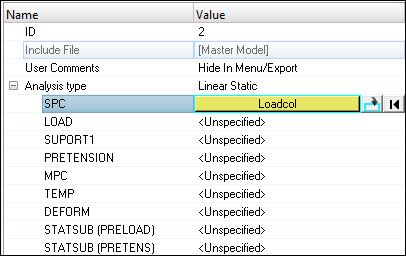
Figure 7: Selecting the constraints
| 5. | In the Select Loadcol dialog, select constraints and click OK. |
| 6. | For TEMP, click Unspecified > Loadcol. |
| 7. | In the Select Loadcol dialog, select THERMAL_LOADING and click OK. |
An OptiStruct subcase has been created which references the constraints in the load collector constraints and the forces in the load collector THERMAL_LOADING.
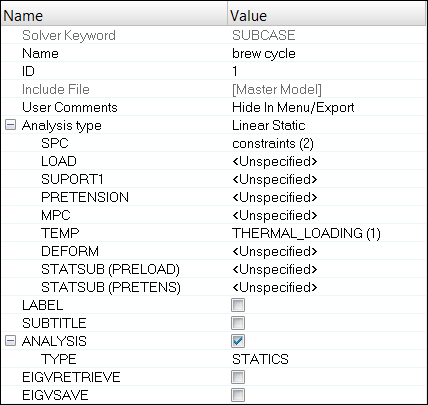
Figure 8: Creating the brew cycle loadstep
Submit the Job
Step 9: Run the Analysis
| 1. | From the Analysis page, enter the OptiStruct panel. |
| 2. | Click save as. A Save As browser window opens. |
| 3. | Select the directory where you would like to write the OptiStruct model file and enter the name for the model, lid_complete.fem, in the File name: field. The .fem filename extension is the suggested extension for OptiStruct input decks. |
The name and location of the lid_complete.fem file displays in the input file: field.
| 5. | Set the export options: toggle to all. |
| 6. | Set the run options: toggle to analysis. |
| 7. | Set the memory options: toggle to memory default. |
| 8. | Click OptiStruct. This launches the OptiStruct job. |
If the job is successful, new results files can be seen in the directory where the OptiStruct model file was written. The lid_complete.out file is a good place to look for error messages that will help to debug the input deck if any errors are present.
The default files written to your directory are:
lid_complete.html
|
HTML report of the analysis, giving a summary of the problem formulation and the analysis results.
|
lid_complete.out
|
OptiStruct output file containing specific information on the file set up, the set up of your optimization problem, estimates for the amount of RAM and disk space required for the run, and compute time information. Review this file for warnings and errors.
|
lid_complete.h3d
|
HyperView binary results file.
|
lid_complete.res
|
HyperMesh binary results file.
|
lid_complete.stat
|
Summary of analysis process, providing CPU information for each step during analysis process.
|
View the Results
Displacement and Stress results are output from OptiStruct for linear static analyses by default. The following steps describe how to view those results in HyperView.
Step 10: View the deformed shape
| 1. | When the message 'ANALYSIS COMPLETED' is received in the HyperWorks Solver View window, click Results. HyperView is launched and the results are loaded. |
| 2. | Click the Wireframe Elements icon  on the toolbar. on the toolbar. |
| 3. | Set the Animation Mode to Linear  . . |
| 4. | Select the Deformed panel toolbar icon  . . |
| 5. | Set Result type: to Displacement (v). |
| 6. | Set Scale: to Model units and enter a value of 2. |
This means that the maximum displacement will be two model units and all other displacements will be proportional.
| 7. | Set the toggle under Undeformed Shape to Wireframe, and select Color as the Component. |
| 8. | Click Apply. A deformed plot of the model should be visible, overlaid on the original undeformed mesh. Refer to the following figure to see what the plot should look like in isometric view. |
Does the deformed shape look correct for the boundary conditions applied to the mesh?
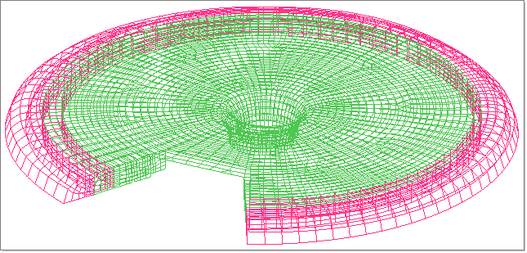
Figure 9: Isometric view of deformed plot overlaid on original undeformed mesh with model units set to 2.
Step 11: View a contour plot of stresses and displacements
| 1. | Select the Contour panel toolbar icon  . . |
| 2. | For Result type:, select Displacement (v). |
| 3. | For data type, select Mag which represents the magnitude of the displacements. |
| 4. | Click Apply. A contoured image of your model should be visible. The contours represent the displacement field resulting from the applied loads and boundary conditions. |
| • | What is the maximum displacement value? |
| • | At what location does the model have its maximum displacement? |
| • | Does this make sense based on the boundary conditions applied to the model? |
| 5. | For Result type:, select Element Stresses (2D & 3D). |
| 6. | For data type, select vonMises. |
| 7. | Click Apply. Each element in the model is assigned a legend color, indicating the von Mises stress value for that element, resulting from the applied loads and boundary conditions. |
| • | What is the maximum von Mises stress value? |
| • | At what location does the model have its maximum stress? |
| • | Does this make sense based on the boundary conditions applied to the model? |
| 8. | Click File > Exit to leave HyperView. |
Step 12: Review the following points
Representation of the hinge opposite of the spout cut-out:
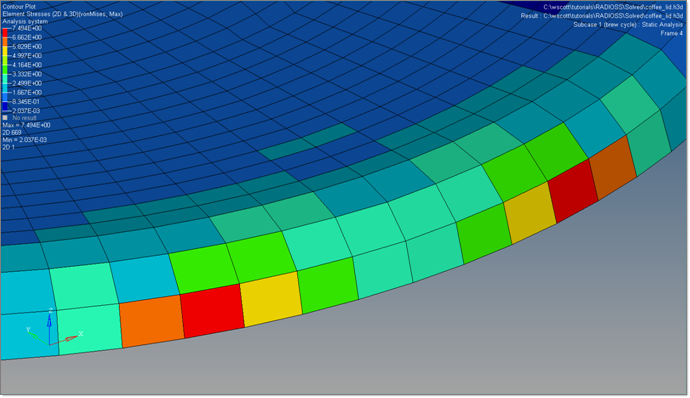
In this analysis, the region around the hinges may be a concern. There are relatively high stress values that must be resolved. For instance, if testing shows that the coffee pot lid wears out around the hinge area over time, these thermal stresses could possibly cause that fatigue.
See Also:
OptiStruct Tutorials
















![]() .
.








